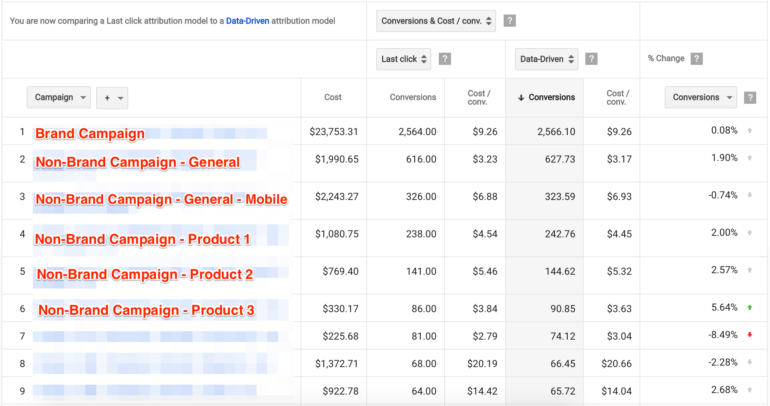September 29, 2017
Over the past week or so, I’ve spent quite some time thinking about the future. Not my future per se, but rather the future of digital advertising. A few months ago, I was perusing LinkedIn, catching up on some industry blogs since being out for three months (See It Takes A Village: Keeping Up With The PPC Industry). I read a blog post that doesn’t rank high in the overall impact it had on me, as I do not remember the topic. But what caught me off guard was a fellow reader’s comment on the blog. In so many words, the comment said something to the effect of “I feel bad for PPC. It will soon be irrelevant as no one clicks on ads anymore. Ads are annoying.”
Wait. What? No one clicks on ads? Are you kidding me? Everyone clicks on ads and I have the data to prove it! Here’s the thing: it’s getting a bit crowded in the marketplace. Facebook ran out of Newsfeed ad space. Google removed sidebar ads. Competition is stiff. And it isn’t because ads are becoming obsolete. Quite the opposite.
It is because of the increase in competition and decrease in traditional ad space that we are digital marketers are called to be wiser in who and how we target as well as in how we allocate our budget. Enter the new era of attribution.
Google’s Data Driven Attribution Model
Google AdWords’ Data Driven Attribution Model has been available for qualifying accounts since May 2016. If you have spent any amount of time talking with your Google rep over the last 18 months I bet attribution has come up at least once. Possibly 50 times. We get it, Google. Last-click is so 2007. If your client has always used last click, and you have always used last click, then switching starts to feel a little scary.

Well, time to get over it. The path to purchase is no longer a straight line, (it hasn’t been for some time) and if we have machine learning available to give us insight into that path, we are fools to ignore it.
Making the Switch
The first step to switching to data driven attribution is to just look at it. In the below example, you can see things don’t shift drastically.

In this case, I’d say it is a no-brainer to go ahead and cut the cord with last click. Just remember: you won’t get historical data driven attribution numbers. Keep that in mind as you are reporting and looking at MoM and YoY data. But eventually, you can use Excel Solver to maximize your budgets and properly allocate money to contributing keywords. Voila! We are done, right?
Everyone Who Has Mastered Data Driven Attribution in AdWords Take One Step Forward…
Not so fast, [your name here].
What about display? What about other channels? When we are taught to diversify our ad budgets across multiple channels because the consumer’s path is less a staircase and more a bowl of spaghetti, what good is a search/shopping campaign-only attribution tool in AdWords? I want the whole picture. I want to see search, display, social, programmatic, direct mail. I want to consider the lifetime value of a customer. I want to trust that when I look at data in one platform, I am not accidentally counting it twice when I look in Analytics. I want it all. I want the truth!

Yeah, yeah, yeah. I know, Jack. I can’t handle it.
I know what you are thinking. “Lauren, Google has Analytics 360 and Attribution 360. Just use those tools.” Good point. There is much buzz over Google Attribution. Our own Kristin Vick is excited for The New Google Attribution. So when I am ready to personally invest my life savings into having access to those programs, I’ll let you know. In the meantime, what are digital advertisers to do? Do we ignore DDA if we don’t have access to more robust (and expensive) analysis platforms? Do we try to sneak a much higher tech fee into our client’s billings to get access?
No on both accounts.
The other day at Hanapin, we were having a group discussion surrounding DDA in AdWords. And the brilliant Kelly Pollock came to this conclusion: This is just a baby step. We can’t ignore DDA. And we won’t stop at DDA in AdWords. This is a stop on the way to a full picture of the customer journey and optimizing campaigns to give due credit. So for the time being, go confidently in the direction of your data.
Now, Back to the Future
As I continue to mull over the future of PPC I know these three current truths:
- PPC is here to stay
- No attribution model is 100% accurate
- If you want to be an industry leader, you need to be willing to take risks and ask tough questions
Even with the possibility of having perfect vision with cross-channel attribution through Google platforms, there are still other things to consider: if the client uses a CRM, how do we mash together that data with DDA? And if a conversion happens and we don’t see the touchpoint, did it really happen?
My point is we can take this step forward with DDA in AdWords, marry it with multi-channel funnel data in Analytics, and start to provide our accounts with more than just “let’s bid up on keywords that have low CPA” (by the way, if your agency is providing you with that as a strategy and nothing more, you should really push them for more). Go ahead and take the baby step of using attribution models in AdWords to your advantage. See what insights the right model can provide and know that there is more on the horizon.
So, I’m sorry, blog post commenter. PPC is here to stay. And the next time a well-placed, well-targeted ad directs you to exactly what you need (a Nicholas Cage mood board tee shirt maybe? I’m not speaking from experience or anything), thank your lucky stars that it is.